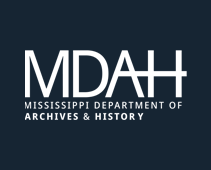Archaeological surveys identify and record historic and prehistoric sites. MDAH has established guidelines for conducting surveys and may provide funding and management assistance.
Phase I: Terrestrial Cultural Resources Survey
The overall goal of a Phase I cultural resources survey is the location and evaluation of archaeological resources within a project’s area of potential effects. If sites are found during this phase of research, sufficient information should be recovered to determine whether further investigations are necessary to assess National Register eligibility. Specific objectives of the Phase I cultural resources survey include: (1) a review of archaeological and historical records pertaining to the general project area; (2) a complete field inspection to determine the presence, nature, and degree of integrity (if possible) of any archaeological remains within the project’s area of potential effects; and (3) an evaluation of the potential impact of the project on the identified archaeological resources. Refer to the guidelines for further Phase I guidance.
Phase II: Terrestrial Cultural Resources Testing and Evaluation
The primary objective of the Phase II investigation is to determine if the site in question is eligible for inclusion in the National Register of Historic Places. Although archaeological site significance can be documented under National Register Criterion A (events or patterns of history), B (important persons), and C (design, construction, and work of a master), eligibility for most sites will probably be determined under Criterion D (information potential) or a combination of all the above (see National Register Bulletin 36). Investigation objectives of an archaeological site include, but are not limited to, identifying: 1) the vertical and horizontal extent of intact archaeological deposits; 2) the density and distribution of the archaeological deposits; 3) the cultural affiliation of the components represented; 4) the presence of undisturbed/relatively intact subsurface features or buried stratified deposits; 5) the classes of archaeological remains retrievable; and 6) whether the site is eligible for inclusion in the National Register. Phase II investigations should not be initiated without consultation with MDAH. Refer to the guidelines for further Phase II guidance.
Phase III: Mitigation of Terrestrial Cultural Resources
The mitigation of impacts or effects on a significant (i.e., National Register eligible) property can take several forms. For example, relocating, changing, or modifying the proposed project is one way to avoid impacting an eligible archaeological site, and can eliminate adverse effects associated with the original project. This step incorporates the property into the project in a non-destructive manner. However, when avoidance of a significant property is impractical and partial or total destruction is unavoidable, an agreement to conduct data recovery (i.e., extensive and in some cases complete site excavation) is usually reached (see Section 110b of NHPA). Archaeologists should work with MDAH to develop a detailed data recovery plan, including justification of the methods employed to retrieve the data, explaining what research questions will be addressed, delineating the proposed analysis of the recovered data, and clearly stating the expected results. If the recovery plan is unusually complex, then a Memorandum of Agreement (MOA) between participating agencies should be developed. Mitigation recovery projects may not proceed without consultation with MDAH and the development of the appropriate written agreement. Whatever is decided, this plan should be consistent with the principles set forth in “Consulting About Archeology Under Section 106,” the “Secretary of the Interior’s Standards and Guidelines for Historic Preservation Projects,” and the “Participants Desk Reference” issued by the Advisory Council on Historic Preservation in 1995. Refer to the guidelines for further Phase III guidance.
Guidelines for Fieldwork, Reports, and Site Cards
Mississippi Standards for Archaeological Practices (effective 2020)
Site Cards Checklist
Please submit site cards to sitenumber@mdah.ms.gov.
